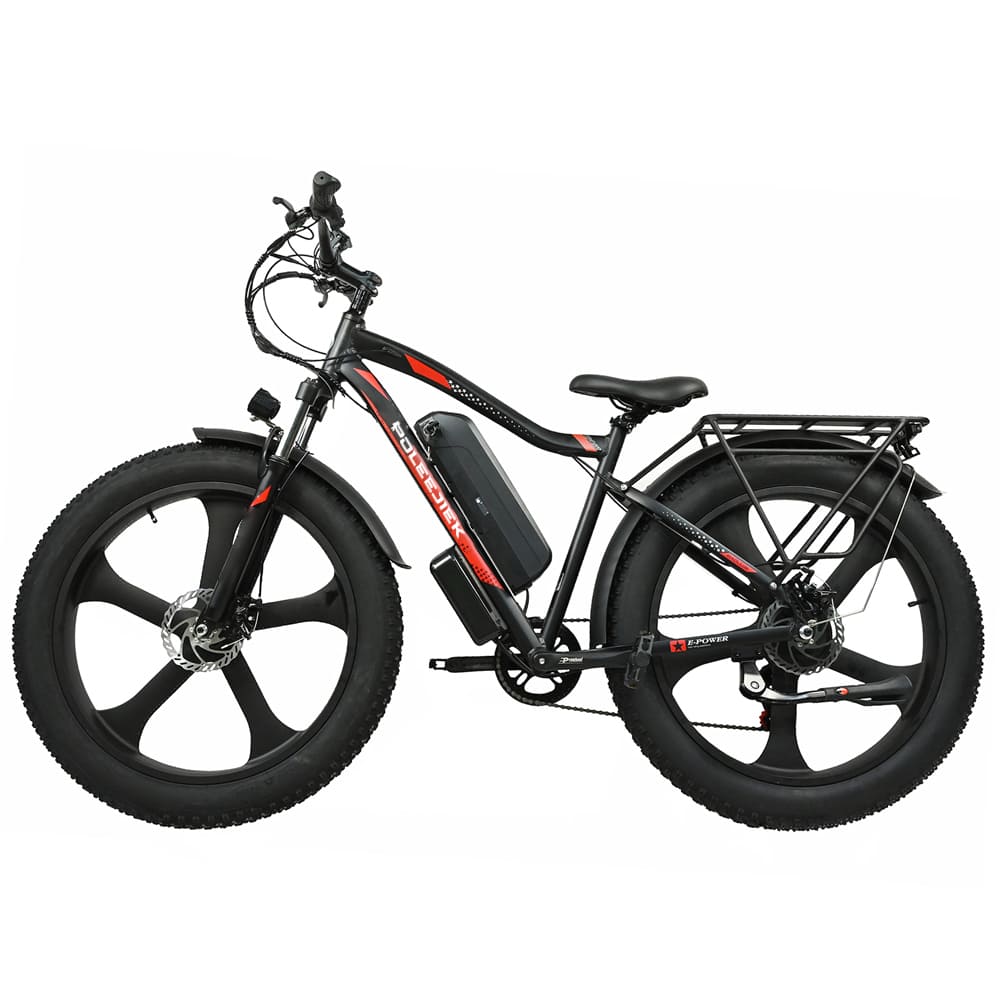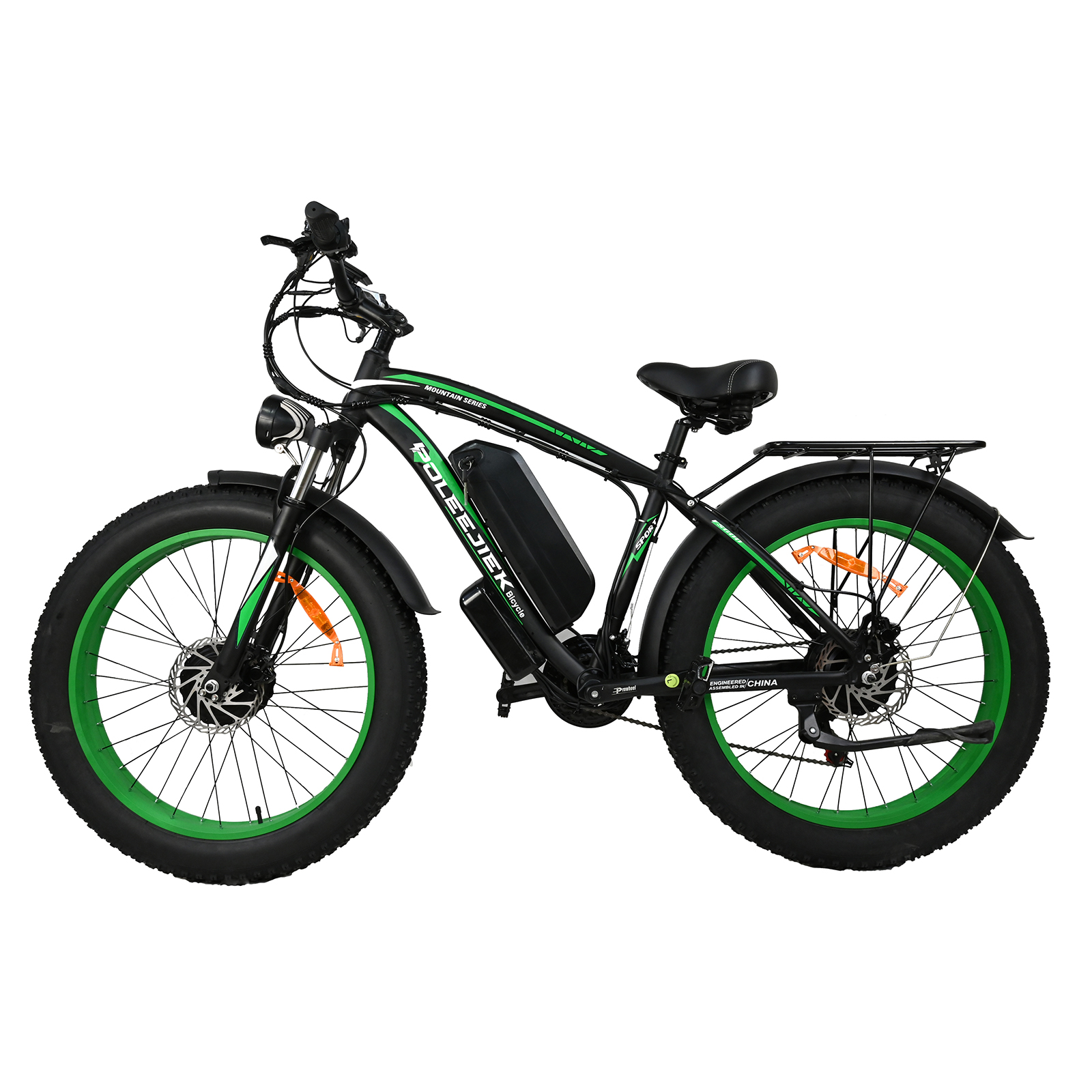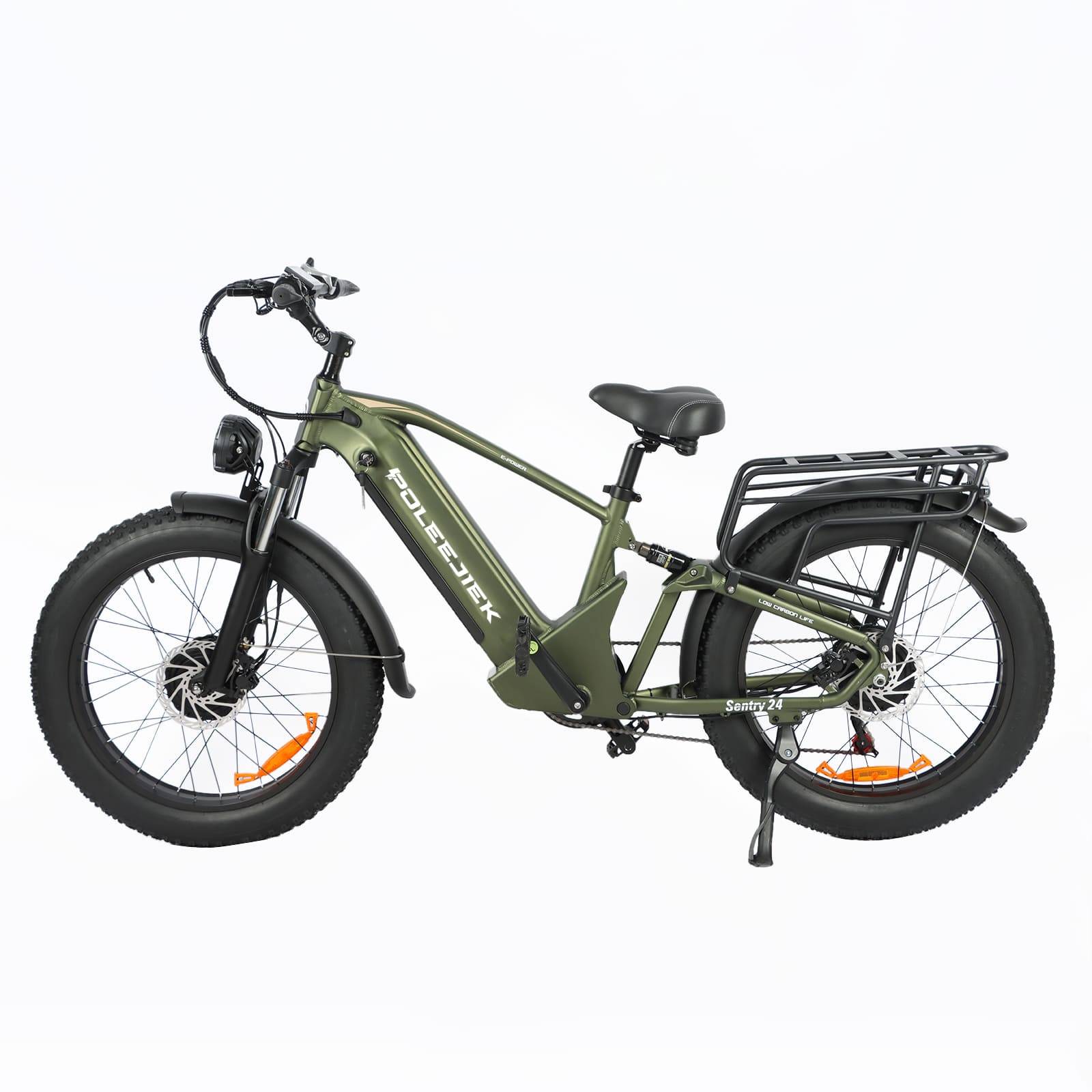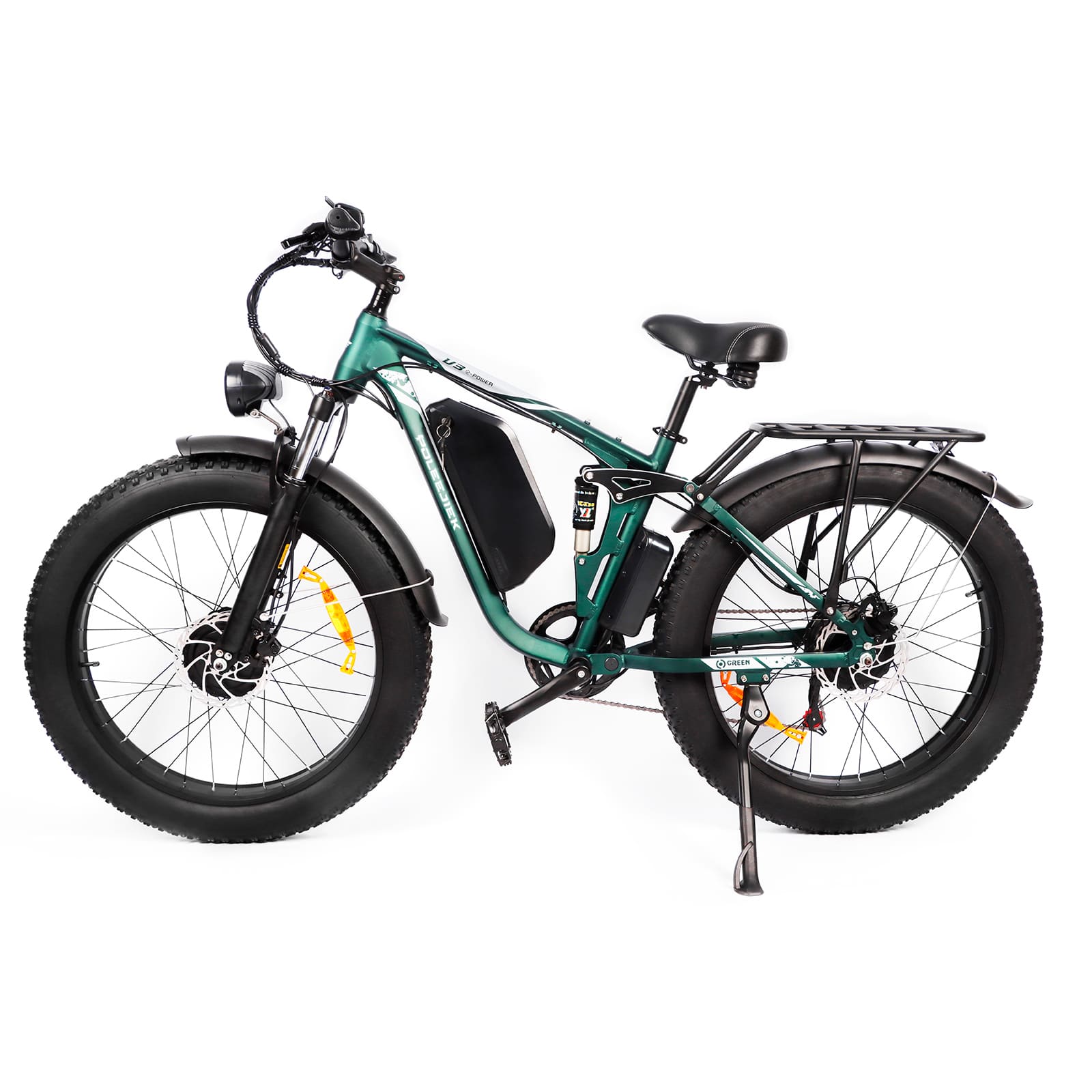How Far Can an E-Bike Go on One Charge?
Battery range is the #1 question for most riders. This POLEEJIEK guide brings together what truly affects single-charge range, how our categories differ, and easy ways to ride farther—rooted in the specs and use-cases we build for at moyoebikes.com.
Quick Answer
Most modern e-bikes deliver a practical single-charge range in the ~25–70 miles (40–112 km) window under mixed city use. Lightweight road/trekking builds can stretch longer; heavy-duty fat-tire or cargo builds may sit lower if ridden hard. Your actual result depends on battery capacity (Wh), assist level, speed, terrain, temperature, tire choice, and payload.
POLEEJIEK Categories & Typical Use
We design for distinct riding scenarios. Explore our line-up to see which range profile fits your routes:
- Road / Narrow-Tire E-Bikes: light, efficient, best mileage at moderate speeds.
- Mountain / Fat-Tire: traction and power for mixed terrain; range varies with elevation and surface.
- Mid-Drive: superior climbing efficiency; great where hills dominate your commute.
- Folding: compact convenience; range tuned for urban hops and multi-modal travel.
- Retro / Vintage: iconic styling with practical urban range; some builds offer dual-battery options.
- Cargo / Utility: built for loads and delivery; consider higher-capacity or dual-battery for long shifts.
At-a-Glance Range by Scenario
| Scenario | Typical Assist & Speed | Practical Range Outlook* |
|---|---|---|
| Urban stop-and-go | Eco/Normal · 12–18 mph | 30–55 miles (48–88 km) |
| Suburban fitness loop | Eco/Trail · steady cadence | 40–70 miles (64–112 km) |
| Hilly commute | Trail/Boost on climbs | 25–50 miles (40–80 km) |
| Delivery + payload | Normal/Boost · frequent stops | 20–45 miles (32–72 km) |
*Your result depends on battery Wh, rider + cargo weight, tires, wind, temperature, and cadence.
What Most Strongly Affects Range
- Battery capacity (Wh): Higher Wh = more energy on board. (Wh = Volts × Amp-hours.)
- Assist level & speed: High assist or high speed increases Wh-per-mile.
- Terrain & elevation: Climbing consumes energy; regenerative effects on hub motors are minimal on bikes.
- Payload & aerodynamics: Rider + cargo mass and wind drag both matter.
- Temperature & tires: Cold temps reduce available capacity; soft or knobby tires add rolling resistance.
- Drivetrain & tuning: Mid-drives can climb efficiently at lower Wh/mi when geared well.
For deeper brand context, browse our categories above on moyoebikes.com.
Real-World Examples from Our Line-Up
The following examples show how use-case and battery strategy change range expectations. Always check the latest specs on each product page.
| POLEEJIEK Focus | Why It’s Built That Way | Where to Explore |
|---|---|---|
| Efficient Road / Trekking | Light frames, narrower tires, steady-state cruising = excellent Wh-per-mile. | Narrow-Tire Collection |
| Fat-Tire / Mountain | Grip and comfort off-road; select higher-capacity packs if you ride steep trails. | Mountain / Fat-Tire |
| Mid-Drive Climbers | Use the bike’s gearing to keep cadence efficient on hills, conserving Wh. | Mid-Drive Series |
| Dual-Battery Options | Extend runtime for delivery or touring; swap or combine packs where available. | Cargo / Utility |
| Retro / Vintage | Classic styling with modern electrics; pick capacity to fit your daily loop. | Retro Collection |
| Compact Folding | Commuter-friendly; balance portability with the Wh you actually need. | Folding Series |
How to Ride Farther on the Same Battery
- Use the lowest assist level that keeps your cadence comfortable.
- Hold a steady pace; avoid repeated full-throttle bursts.
- Keep tires properly inflated for your tire type and load.
- Shift gears to keep cadence efficient, especially on mid-drives.
- Reduce drag: tidy panniers, avoid bulky boxes when possible.
- Plan hillier routes to minimize steep, stop-start climbs.
- In winter, store and charge batteries at room temperature.
- Consider a higher-capacity or dual-battery setup for long shifts.
Battery Longevity vs. Single-Charge Range
Range is what you get today; longevity is how long your pack stays healthy. Lithium-ion e-bike batteries commonly endure hundreds of charge cycles when treated well. Keep state of charge roughly in the 20–80% band for daily use, avoid extended storage at 0% or 100%, and don’t leave packs in very hot cars or in freezing garages. When in doubt, follow the specific guidance on each product page at moyoebikes.com.
Find the Right Range for Your Route
Tell us your commute distance, terrain, payload, and preferred speed—we’ll match you with an optimal capacity and drive system from the POLEEJIEK range.
Prefer retro aesthetics or a compact folder? Start with Retro or Folding. Need torque for hills? Explore Mid-Drive.
FAQ
How do I estimate my range with a specific POLEEJIEK model?
Check the battery capacity (Wh) on the product page, then divide by your expected Wh-per-mile. City riders using moderate assist often see ~12–18 Wh/mi; trail riding or high speeds can be higher. For a tailored estimate, contact us with your route: Contact POLEEJIEK.
Will a mid-drive give me more range than a hub motor?
Not automatically—but on hilly routes, a mid-drive can leverage gears to reduce energy per mile at the same climbing pace, which often improves effective range for the same Wh. See our mid-drive collection.
Is dual-battery worth it?
If you carry cargo, ride long shifts, or need reserve for cold weather, dual-battery or higher-Wh packs are absolutely worth it. Explore options in cargo / utility or check product pages for capacity upgrades.






